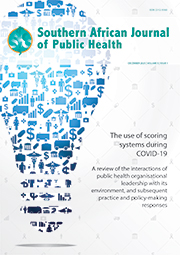Research

An international partnership was instrumental in building blood transfusion research capacity in South Africa
Abstract
Background. The South African National Blood Service participated in the Recipient Epidemiology and Donor Evaluation Study (REDS-III) multicentre study between 2011 and 2019. The goal of this partnership was to perform cutting-edge research in transfusion medicine while at the same time building a broad base of local research capacity. This is a challenge in low- and middle-income countries such as South Africa (SA) for multifactorial reasons.
Objectives. To evaluate the outcome of the research capacity-building initiative.
Methods. The REDS III study provided multiple opportunities for local research participation in projects designed to reduce the impact of HIV on the SA blood supply. Research capacity building initiatives included research training courses in SA and internationally for promising junior SA investigators under the separate Fogarty International HIV training grant. In addition, junior researchers were provided with ongoing mentorship and collaborative interactions with experienced researchers. Research outputs directly and indirectly linked to REDS III are described.
Results. Over a 9-year period, the following research capacity building was accomplished: the core study team of 12 staff were trained in the responsible conduct of research, 34 staff attended local research training and 6 young investigators were trained internationally in manuscript writing. Three staff developed a study database. Five staff expanded the existing biorepository. Sophisticated laboratory and clinical skills were taught to 9 staff to enable large leukapheresis collections and performance of specialised laboratory tests locally. A functional research office was established by 4 study members. A total of 91 abstracts were presented at international and national conferences. Twenty-three transfusion-related manuscripts have been published in reputable journals. Six staff attained further qualifications, of which an additional three are PhDs in progress. A long-term plan to establish a research academy at the SA National Blood Service (SANBS) has been initiated.
Conclusion. Significant research capacity and output was established at SANBS through a successful North-South collaboration effecting blood transfusion safety in SA. Achieving sustainability was an early commitment, and has resulted in the establishment of a research academy and multiple local and international collaborations
Authors' affiliations
U Jentsch, Medical Department, South African National Blood Service, Johannesburg, South Africa
K van den Berg, Medical Department, South African National Blood Service, Johannesburg, South Africa
R Swanevelder, Medical Department, South African National Blood Service, Johannesburg, South Africa
M Vermeulen, Medical Department, South African National Blood Service, Johannesburg, South Africa
R Reddy, Medical Department, South African National Blood Service, Johannesburg, South Africa
E L Murphy, Departments of Laboratory Medicine and Epidemiology/Biostatistics, School of Medicine, University of California, San Francisco, and Vitalant Research Institute, San Francisco, USA
Full Text
Cite this article
Article History
Date published: 2021-04-19
Article Views
Full text views: 1892

.jpg)


Comments on this article
*Read our policy for posting comments here